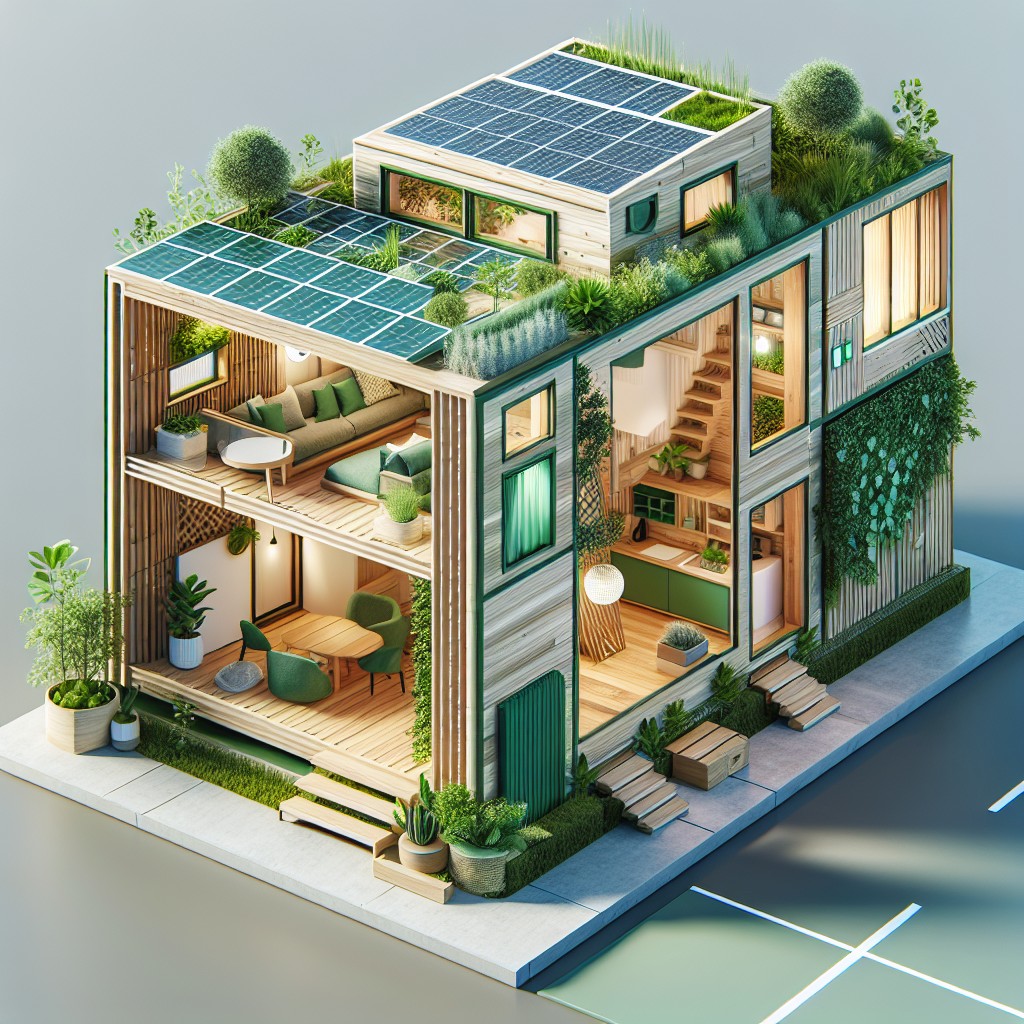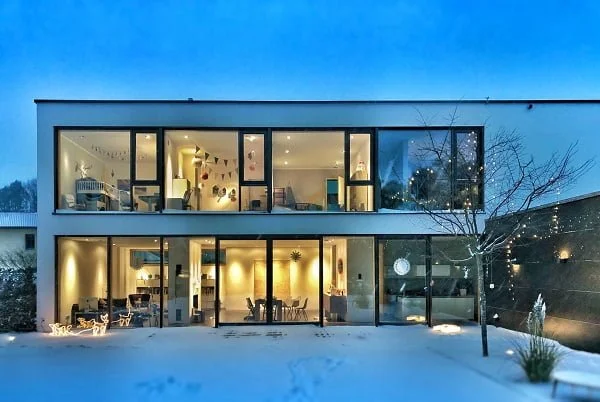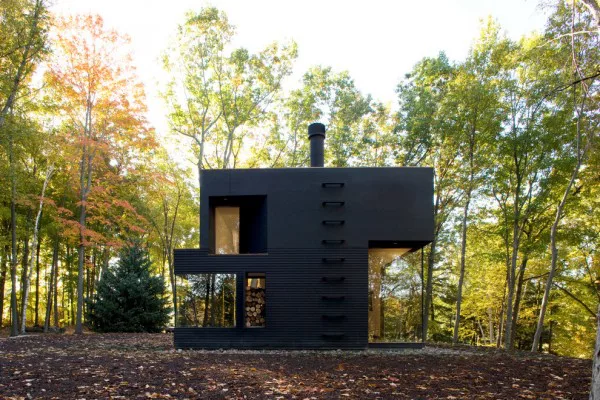Last updated on
Building a duplex shouldn’t empty your bank account, because there are surprisingly cost-effective ways to materialize your dream home—curious to learn more?
Building a duplex can be a smart investment, offering the potential for rental income, and providing flexible living arrangements. However, the financial burden of construction can be a significant hurdle. The secret lies in clever design decisions, material choices, and strategic planning to keep expenditures at bay.
Whether you’re a seasoned builder or a first-time investor, this article dives into practical strategies to construct a cost-efficient duplex without compromising on quality. From selecting inexpensive, durable materials to navigating the opportunities for land acquisition, this guide outlines how to streamline your budget smartly.
Moreover, we’ll explore the advantages of modern prefabricated options, which can save both time and money, ensuring that your journey to building a duplex is as affordable as it is rewarding.
Key takeaways:
- Maximize space with open floor plans and multifunctional areas.
- Choose cost-effective materials like concrete blocks and engineered wood.
- Trim labor costs by getting multiple quotes and utilizing skilled labor for critical stages.
- Research land acquisition options, including less developed neighborhoods and brownfields.
- Consider prefabricated duplexes for lower costs and faster construction.
Definition of a Duplex
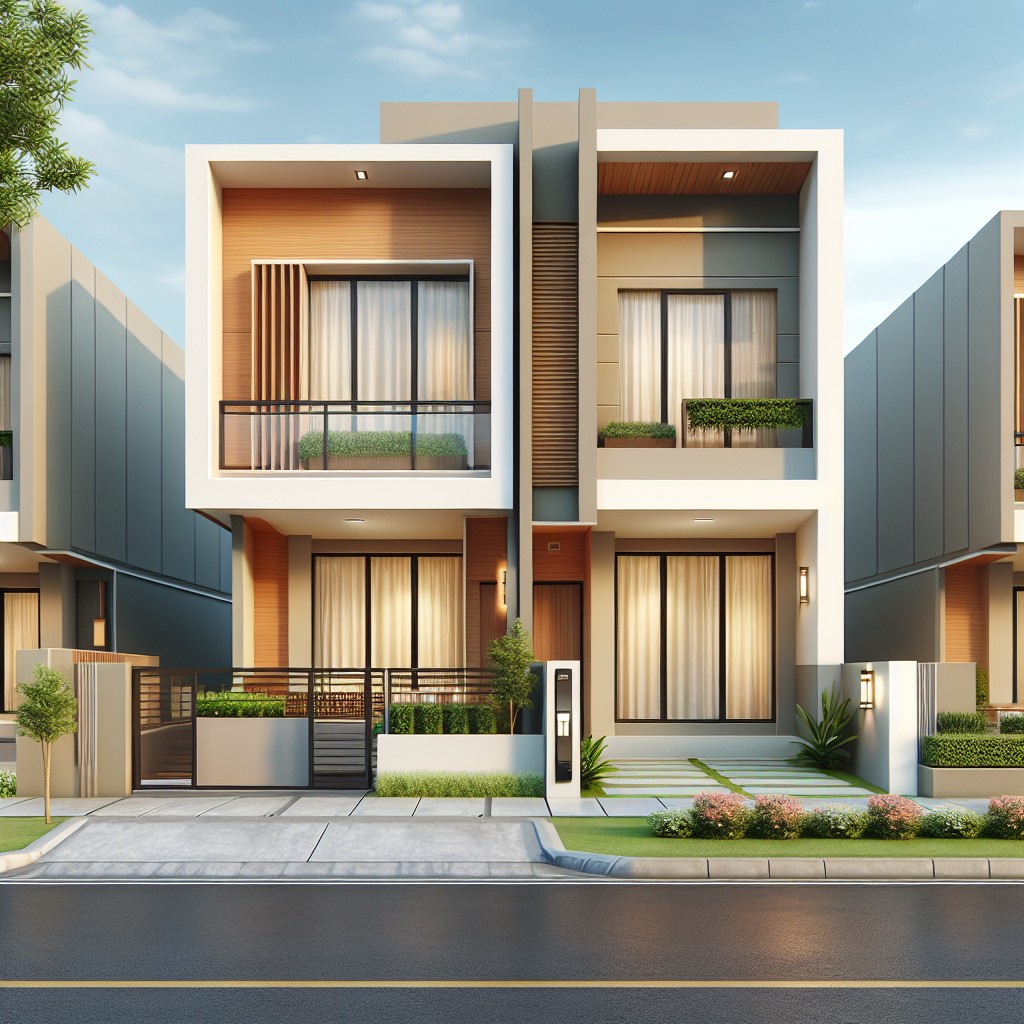
A duplex is a residential building divided into two separate living units, either side-by-side or on two different floors. Each unit typically has its own entrance, kitchen, bathrooms, and living spaces, functioning as independent homes but sharing a common wall or ceiling/floor. Think of it as a halfway point between a single-family home and a multi-family residence.
Duplexes can be a smart option for homeowners who wish to live in one unit and rent out the other, effectively reducing living expenses while generating income. They also appeal to extended families seeking proximity with privacy.
In construction terms, duplexes offer an economical use of land and resources while providing housing solutions that accommodate diverse needs.
Essentials of a Cost-Effective Duplex Design
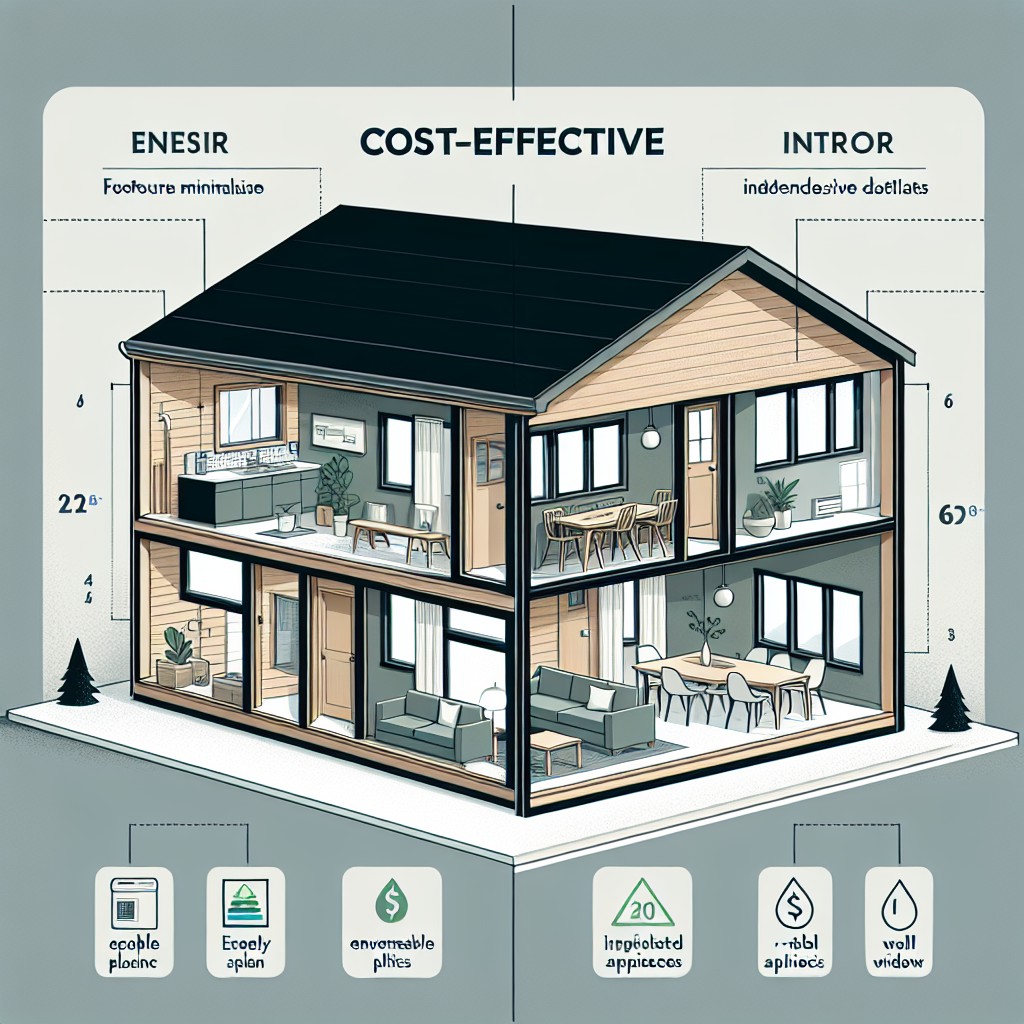
Maximizing space is key in creating a cost-effective duplex. Opt for an open floor plan to save on interior walls and doors. Clever storage solutions like built-ins can eliminate the need for extra furniture, thereby saving costs and space.
Choose simple roof designs. Complex structures with multiple valleys and peaks can escalate roofing costs. A straightforward gable or hip roof lends itself to financial prudence and easier maintenance.
Consider standard window and door sizes. While bespoke features might seem appealing, they come at a premium. Standard dimensions not only reduce initial costs but also simplify future repairs or replacements.
Incorporate multifunctional areas. A room that can serve as a guest bedroom, home office, or den, depending on the tenant’s needs, can add to the duplex’s appeal without surging the construction budget.
Finally, stick with durable, low-maintenance finishes. Materials that stand the test of time reduce the frequency of repairs and replacements, contributing to long-term savings.
Affordable Building Materials for Duplex Construction

Selecting the right materials is crucial for staying within budget while ensuring durability and appeal. Opting for concrete blocks or prefabricated panels can offer substantial savings compared to traditional brick, without compromising on stability.
For interior walls, consider drywall over plaster which is not only cheaper but also easier to install, reducing labor costs.
Engineered wood products for beams and flooring provide strength and sustainability at a fraction of the cost of hardwood, while still delivering an aesthetically pleasing look. Metal roofing may come with a higher initial price tag, but its longevity and minimal maintenance can make it more cost-effective in the long run.
Energy efficiency is an area that shouldn’t be overlooked. Double-glazed windows and proper insulation may seem pricey at first, but they slash energy bills, creating savings over time. Remember, small choices like standard fixture sizes and minimizing bespoke elements will avoid unnecessary expenses.
Lastly, keep an eye on the market for deals on materials, especially toward the end of the month when suppliers are looking to clear stock. Being flexible with design choices to accommodate these deals can lead to substantial reductions in the overall cost.
Labor Costs: Strategies to Save
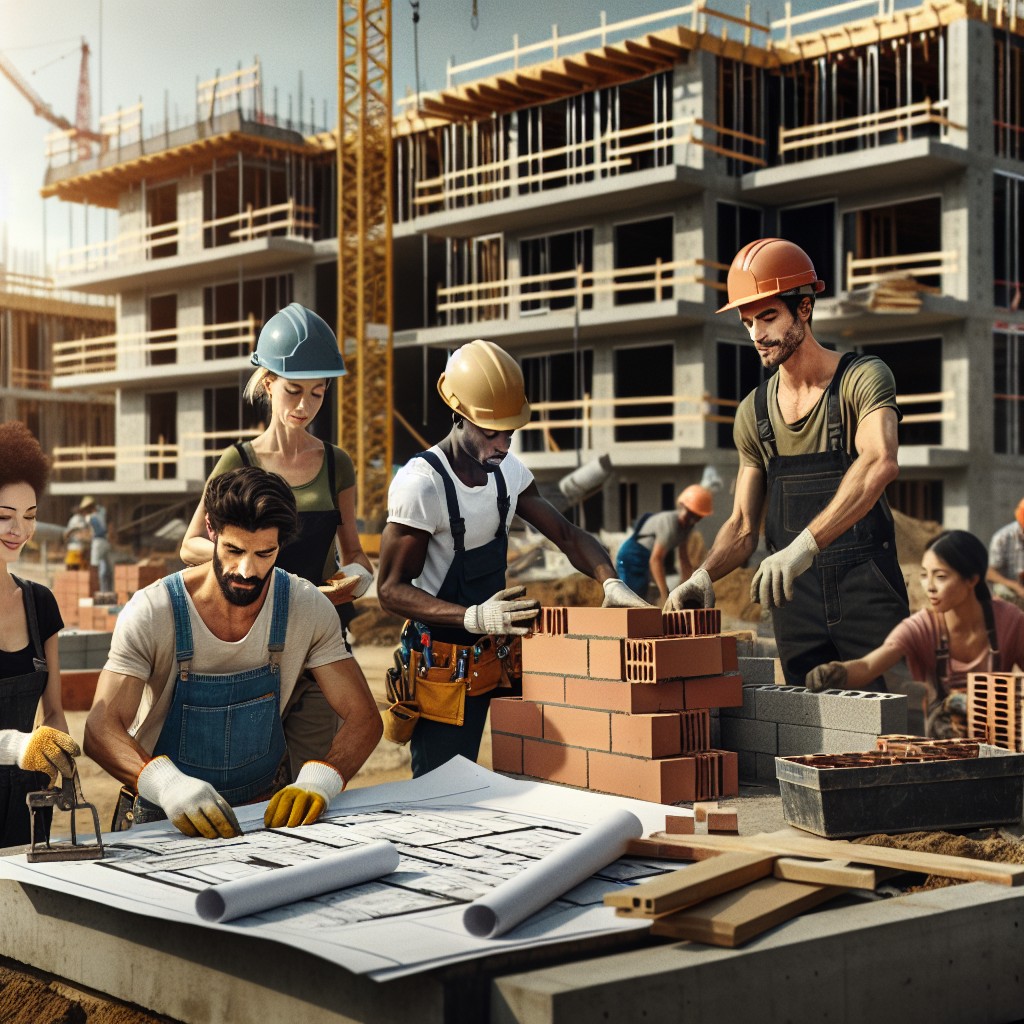
Trimming labor expenses significantly reduces the overall cost of building a duplex. Start by getting multiple quotes from contractors to ensure competitive pricing. Leverage bids as a negotiation tool to potentially drive down costs.
Consider a phased approach where skilled labor is utilized for critical stages, such as the foundation, framing, and plumbing, while more manageable tasks, such as painting or installing fixtures, can be undertaken by less expensive labor or even done yourself if you’re capable and understand the time commitment.
Establish a clear and efficient construction timeline with your hired professionals, incentivizing timely completion. This minimizes prolonged labor costs and potentially expensive downtime.
Engage a construction manager on a fixed-fee basis rather than a percentage of the project cost, aligning your interests in keeping overall costs down.
Lastly, tap into local vocational schools that might offer reduced rates for services provided by students under professional supervision, allowing you to save on labor costs while contributing to educational programs.
Land Acquisition for Duplex Building: Finding Value
Securing the right plot of land is a pivotal step that can significantly impact your construction budget. Look for areas where the property values are rising, which could indicate a growing demand and a good investment for the future. It’s also strategic to consider less developed neighborhoods on the outskirts of expensive ones; these often offer lower land costs and potential for value increase.
Don’t overlook brownfields, parcels of land previously used for industrial purposes or certain types of commercial uses. These can often be acquired at lower costs, though it’s crucial to ensure they’re cleared for residential use and free of contamination.
Examine local zoning laws meticulously. Some areas are designated solely for duplexes and multi-family units, which might be less costly than land zoned for single-family homes due to availability and demand dynamics.
Choosing the shape and topography of your plot carefully can save you money as well. Flat land requires less excavation and preparation compared to sloped land, which requires additional engineering work to become build-ready.
Lastly, always factor in the proximity to utilities. If the land isn’t connected to sewer, water, or electric services, the additional cost to extend these utilities can be substantial. Evaluating these elements before purchase helps in forecasting the full cost and ensures you align with your budget.
Prefabricated Duplex Options: Cost and Benefits
Prefabricated, or modular, duplexes are constructed off-site in a controlled factory environment before being shipped to the final location. This approach often results in lower costs due to economies of scale and reduced waste. A key advantage is the speed of construction, as sections of the home are built simultaneously, cutting down overall build time.
The streamlined process means labor expenses can be forecasted more accurately and generally are less than traditional building methods.
Another benefit lies in the precision of factory settings, which can lead to better insulated and more energy-efficient homes, offering long-term savings on utility bills. These homes must adhere to the same building codes as traditional houses, ensuring they do not compromise on safety or quality.
Modular construction keeps unexpected weather delays to a minimum, safeguarding against cost overruns that can occur with on-site builds. Upon delivery, the duplex’s sections are assembled on a pre-prepared foundation, drastically reducing the time before the property can start generating rental income.
When considering a modular duplex, explore the variety of design options available that can meet both aesthetic preferences and budget constraints. Remember to factor in the cost of land and site preparation, as these expenses are not typically covered in the quoted price for the prefabricated structure.
Duplex Construction Styles With Lower Costs
When considering the architectural style that aligns with cost efficiency for duplex buildings, simplicity reigns supreme. Lean towards designs with straightforward, rectangular floor plans which reduce complexity and waste.
Single Story vs. Two Story: A single-story layout can potentially cut down on the costs of stair construction and complex roofing systems required for multi-level duplexes.
Roof Design: Opt for a simple gable or hip roof rather than intricate designs with multiple valleys and peaks. This approach minimizes the amount of materials and labor needed.
Exterior Finishes: The use of vinyl siding or stucco can offer a cost-effective alternative to more expensive options like brick or stone. These materials require less maintenance and can be just as durable.
Interior Layout: Stick to open floor plans which can make spaces seem larger without the added expense of additional walls.
Standard Windows and Doors: Using standard sizes for windows and doors can lead to significant savings, as custom sizes are typically more expensive both to purchase and install.
Incorporating these elements into the design phase of a duplex build can noticeably reduce the overall construction costs without compromising on the structural integrity or aesthetic appeal of the property. Remember, the goal is to blend affordability with functionality and longevity.
Permitting and Fees: Reducing Extra Costs
Navigating the permitting process and managing associated fees can be daunting, yet with some savvy planning, you can mitigate these expenses. Begin by doing thorough research or engaging with a local expert who understands the specific requirements of your municipality. Sometimes, jurisdictions offer streamlined or discounted processes for certain types of housing, such as affordable or sustainable builds.
Consider the timing of your permit applications carefully. Submitting applications out of sequence may result in costly delays or the need to resubmit, incurring additional fees. Also, be on the lookout for any potential waivers or reductions in fees that you might qualify for.
Be clear about what’s included in the permits you’re applying for. Perhaps a single, comprehensive permit might cover multiple aspects of the build at a lower cumulative cost than individual permits for each stage of construction.
Engaging with professionals who have a track record of cost-effective practices can translate into permit-related savings. They can flag common pitfalls that lead to extra fees and help streamline approvals.
Lastly, maintain an organized record of all documents, submissions, and correspondences about your permits. Clear documentation can prevent misunderstandings that may result in reapplication fees or delays that push up costs indirectly.
Financing a Duplex Build: Options and Down Payments
Securing funds for your duplex build starts with exploring a range of mortgage options. Traditional loans, like a standard mortgage, are commonly used, but special programs intended for construction might serve you better, offering interest-only payments during the build phase.
A down payment is typically required, and the percentage can vary. For example, a conventional loan could ask for as little as 5% if you’re planning to occupy one of the units. However, investment properties usually require at least 20% down.
To streamline the process, ensure your credit is in good standing, and prepare to provide detailed cost projections and plans. This helps in convincing lenders of the project’s feasibility and your reliability. Don’t forget to shop around; credit unions and local banks often have competitive rates tailored to community development projects like duplexes.
Lastly, research government-backed loans, like those from the FHA—conditions are often favorable to first-time builders and can dramatically lower the needed down payment.
Navigating this process efficiently can mean the difference between a financial stretch and a comfortably managed investment.
The Economics of Duplex Ownership: Investment Potential
Owning a duplex offers a unique avenue for savvy real estate investors to optimize their rental income while minimizing vacancy risk. With two units under one roof, the potential earnings are effectively doubled compared to a single-family residence. Additionally, living in one unit while renting out the other can all but erase personal living expenses, a strategy known as house hacking. This approach not only fosters a way to build equity swiftly but also provides an on-site management solution, potentially saving on property management fees.
The financial benefits extend into tax deductions, where expenses such as mortgage interest, property taxes, and maintenance costs can be offset against rental income. Depreciation is another compelling tax advantage, allowing owners to account for the natural wear and tear of the property over time.
Moreover, as the real estate market appreciates, a duplex in a favorable location can significantly increase in value, yielding considerable capital gains upon sale. It’s essential, however, to conduct thorough market research and due diligence to ensure a well-informed investment that aligns with your financial plans. With proper insight and strategy, duplex ownership can be a cornerstone of a diversified investment portfolio, providing both immediate cash flow and long-term wealth accumulation.
Timeline Considerations in Duplex Construction
Building a duplex efficiently involves meticulous timeline planning. Here’s how smart scheduling can cut costs:
- Pre-Construction Phase: Securing permits and finalizing designs early prevents delays. Delays often inflate costs, so ensure this phase is watertight.
Seasonal Timing: Start construction in weather-friendly seasons to avoid interruptions. Bad weather can lead to costly downtime.
Simultaneous Processes: When possible, schedule tasks like electrical and plumbing to happen in tandem. This streamlines the build process, saving time and money.
Material Lead Time: Order materials well in advance, accounting for delivery times. Material delays can stall construction, so plan ahead to keep the project moving.
Buffer Periods: Have contingency days in your schedule. Unexpected things happen. By accounting for them, you won’t be cornered into expensive solutions.
Inspections and Approvals: Schedule local authority inspections in advance. Delays in inspection can lead to delays in construction, racking up additional costs.
Efficient timeline management is a strategic tool in cost-saving. It ensures the smooth progression of the build and avoids the financial pitfalls associated with project overruns.
Choosing a Duplex Builder: Cost-Saving Questions to Ask
Selecting the right builder is pivotal in keeping construction costs within your budget.
Inquire about their experience specifically with duplexes, as familiarity can lead to more efficient building processes and cost savings.
Ask for a detailed breakdown of their pricing to identify any areas where you can cut back without compromising quality.
Discuss the potential for negotiating a fixed-price contract to shield you from unexpected cost overruns.
Explore the builder’s network of suppliers and the possibility of leveraging their relationships for discounts on materials.
Question the standard features included in their base price and the cost implications of any upgrades.
Evaluate their project management practices and how they intend to minimize delays, which can impact your budget.
Request references from previous clients to gauge their satisfaction with the cost versus the value received.
Engage in a transparent dialogue with potential builders to ensure your duplex meets both your expectations and your budget.
Cost Comparison: Duplex Vs. Single-Family Home Vs. Multi-Unit Buildings
The financial implications of building a duplex compared to a single-family home or a multi-unit building are starkly varied. With a duplex, the per-unit construction cost is often lower due to shared walls and systems. This contrasts with single-family homes, where land and construction costs are designated for one dwelling, potentially increasing per-square-foot expenses.
Moving to multi-unit buildings, economies of scale can kick in, lowering the per-unit cost as the number of units increases. However, this can come with higher overall costs due to larger-scale site development, added complexity in design, and potentially more expensive commercial-grade materials.
Additionally, financing a single-family home can be more straightforward, often requiring lower down payments than multi-unit properties, which might be considered commercial loans with different terms. Conversely, duplexes can offer a middle ground, providing the investment benefits of a multi-unit property while borrowing under typically more favorable residential loan terms.
Finally, when assessing these options, remember that zoning laws and the cost of utilities impact overall expenses. Duplexes and multi-unit buildings may require higher upfront costs for sewage and water meters, yet they can streamline future maintenance and utility fees.
Legal and Zoning Considerations for Duplex Construction
Before laying the first brick for your budget-friendly duplex, navigating legal and zoning regulations is crucial. These rules determine what you can build and where, ensuring public safety and adherence to community standards.
Firstly, check with your local zoning board to confirm your chosen parcel of land is zoned for a two-unit residence. Zoning laws vary significantly by locality, and sometimes even within the same city. Some areas might only allow single-family homes, while others might permit multi-family units like duplexes.
Then delve into building codes. These stipulate minimum construction standards, covering fire safety, structural integrity, and even the size and height of your building. Staying informed about these codes is crucial to avoid costly re-dos or legal complications.
Also consider the impact of parking requirements on your design. Many municipalities require a certain number of off-street parking spaces per unit, which might influence the footprint of your duplex.
Don’t overlook easements and setbacks either. Easements allow others to use part of your land for a specific purpose, like utilities, which could impact where you can build. Setbacks stipulate how close your duplex can be to property lines, roads, and other structures.
Lastly, be aware of the permit process, which typically involves submitting your building plans for approval before construction starts. Navigating this process smoothly involves meeting all local regulations and often negotiating with multiple municipal departments.
By understanding these legal and zoning essentials, you place yourself in a position to create a duplex that’s not only affordable but compliant and harmonious with the local community.
Energy Efficiency and Long-Term Savings in Duplex Building
Incorporating energy-efficient features during construction can significantly reduce living costs for duplex inhabitants. Opting for high-quality insulation materials might have a higher up-front cost, but the amount saved on heating and cooling bills over time will offset this investment.
Installing energy-efficient windows and doors minimizes thermal transfer, keeping interiors comfortable without overworking HVAC systems. Choosing LED lighting fixtures and Energy Star-rated appliances can also contribute to lower energy consumption. Solar panels, while requiring initial capital, can yield considerable savings and may qualify for tax incentives, reducing the effective cost.
Moreover, low-flow water fixtures such as showerheads, faucets, and toilets can greatly decrease water usage, leading to lower utility bills and conserving a valuable resource.
Focusing on energy efficiency also enhances the property’s market value and attraction to future buyers or renters concerned with sustainability and operational costs. By investing thoughtfully in these areas, duplex builders lay the foundation for residences that reap economic benefits for years to come.
Insurance and Duplex Buildings: What to Know Before Building
When you’re ready to insure your duplex, consider the dual nature of the property – it’s both a home and, often, an investment. Insurance premiums may be higher compared to single-family homes because they cover the unique risks associated with a tenant-occupied space.
There are some key points you should know:
- Obtain a landlord insurance policy. This covers property damage, liability costs, and loss of rental income for the portion you rent out.
- Check for builder’s risk insurance during construction. It covers risks during the building phase, like theft or damage to materials and equipment.
- Opt for a comprehensive policy that encapsulates all aspects of duplex ownership, including potential liability issues.
- Discuss with your provider about flood, earthquake, or other additional coverage relevant to your geographic location.
- Ensure your policy factors in the current construction costs, so rebuilding after a potential loss is covered adequately.
- Consider the impact of rental activities on your premiums. Having long-term tenants might be favorable compared to frequent tenant turnover.
Always compare quotes and clarify coverage details with insurance agents before making a decision to ensure you’re not only getting the best rate but also the appropriate level of protection for your investment.
Rental Potential and ROI for Duplex Investors
Investing in a duplex comes with the distinct advantage of generating two streams of rental income while only incurring the expenses of a single property. This characteristic can significantly enhance your return on investment (ROI) in comparison to single-family homes.
Here’s what you need to consider:
1. Dual Income Streams
Unlike single-tenant properties, a duplex can provide income from two units. If one unit is vacant, the other unit can still bring in revenue, reducing financial risk.
2. Market Research
Understand the rental demand in the area. High-demand locations can yield higher rents, thus improving ROI.
3. Financing Benefits
Owner-occupant investors may qualify for favorable financing rates, including lower down payment requirements.
4. Property Management
Effective management can reduce tenant turnover, and increase the longevity of the leases, which stabilizes your income.
5. Tax Advantages
Maximizing tax deductions related to mortgage interest, property taxes, and maintenance expenses can improve net earnings.
6. Appreciation Potential
Selecting an area where property values are increasing can result in significant capital gains over time.
7. Cost of Maintenance and Repairs
Factor these costs into your calculations as they can impact the net income.
By understanding these elements, duplex investors can craft a strategy that not only covers the mortgage but also contributes to their financial goals.
FAQ
Is building a duplex a good investment?
Absolutely, building a duplex can be a solid investment due to its potential for higher profitability, its appeal to renters, and cost-effective maintenance compared to two individual rental units.
Is it smart to build a duplex?
Building a duplex is a smart decision as it offers the dual advantages of creating a personalized living space for yourself and a source of potential rental income.
How much is it to build a duplex in Texas?
The average cost to build a duplex in Texas ranges from $95 to $220 per square foot, with most people spending approximately $130 per square foot.
What factors should one consider when planning to build a duplex?
When planning to build a duplex, consider elements like budget, location, required permits, zoning laws, architect selection, choosing the right contractor, design features, and potential rental income.
How does the construction cost of a duplex compare to single-family homes?
The construction cost of a duplex tends to be less per square foot compared to single-family homes due to shared walls and utilities.
What are the prospective financial returns of investing in a duplex property?
Investing in a duplex property can lead to substantial financial returns through rental income, appreciation value, and tax benefits.
Recap

